The best sleeping pads: comfy mats for all camping trips
Portable and lightweight, these are the best sleeping pads for backcountry escapades and camping vacations
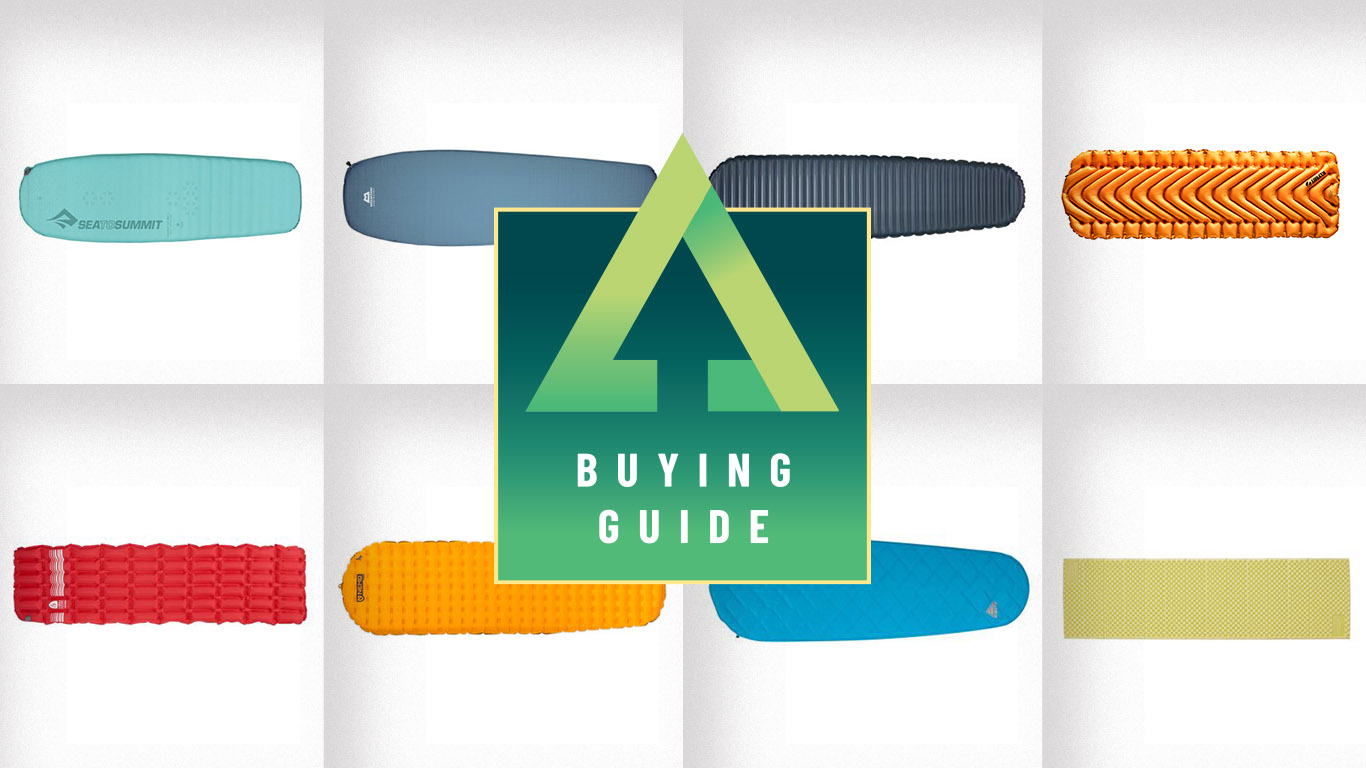
When it comes to the best sleeping pads and lightweight camping mats for wild camping missions and backpacking escapes, the four most important factors are weight, packability, reliability and – of course – comfort.
If a mat is lacking in any one of those areas, it can ruin an otherwise great adventure. If it’s too heavy, or bulky, it'll ruin your hiking experience. If it's liable to puncture, or simply does not offer protection from the hard ground, you won’t get a good night’s sleep.
If you're backpacking or bikepacking, the super lightweight Nemo Tensor Ultralight Sleeping Pad gets our seal of approval. Despite tipping the scales at just over 500g, it feels comfortable and luxurious, and we found that the insulated version didn't squeak at night. For year-round camping, the Therm-a-Rest NeoAir XLite NXT is the best sleeping pad around, gloriously quiet and offering real warmth at night.
Whatever your adventure style, you'll sleep soundly on any one of the selection below. For more on what to look for when buying sleeping pads, see our guide at the bottom of the page.
The best sleeping pads
You can trust Advnture
Best lightweight sleeping pads

Specifications
Reasons to buy
Reasons to avoid
Nemo’s lightest pad still offers luxurious comfort, making it perfect for fastpacking and expeditions. It comes in ten shapes and sizes, five insulated and five not, including short, mummy, and rectangular, wide, and long. One of our only complaints is that it is hard to pick which shape and size to get, because there are so many options, but all versions of the mat are 3 inches thick and structured with ‘Spaceframe’ baffles, which are both stable and which distribute your weight evenly.
Happily, the insulated pads are as silent as the non-insulated while you sleep, because the body-heat reflecting insulation is suspended inside the pad. The zero-profile, multi-functional, micro-adjustable valve doesn’t stand proud of the pad, and it’s placed where it’s easy to let a little air out if the pad feels too hard. The pad comes with Nemo’s Vortex pump sack, which helps minimize moisture from your breath getting inside.
Read our full Nemo Tensor Ultralight sleeping pad review

Specifications
Reasons to buy
Reasons to avoid
The rectangular Synmat has proven itself to be warm and comfortable many times on test in most seasons, and because its generous size it is ideal for taller campers and anyone who tends to toss and turn at night. We reviewed the Medium Wide version of the mat, which has dimensions that offer more room if you’re a restless sleeper and tend to find yourself falling off smaller designs in the night. There’s no weight compromise for that bigger size, either – as this is an inflatable mat, it weighs just 565g and packs down to the size of a large water bottle, making it a great three-season expedition mat.
The Synmat is quick and easy to set up, with the included stuff sack doubling as a pump: the smartly designed Schnozzel Pumpbag means you can inflate the mat while avoiding humidity from your breath affecting the insulation. It has separate inflation and deflation valves, which don’t protrude from the mat, and the GripSkin honeycomb-pattern coating offers good next-to-skin comfort, while helping to keep you from sliding around too much in the night. It packs down easily too, although there is a knack to folding it tightly enough to get it back in its stuff sack.
Read our full Exped Synmat UL medium wide camping mat review

Specifications
Reasons to buy
Reasons to avoid
Therm-a-Rest originated the concept of the self-inflating camping mattress, way back in the early 1970s. The NeoAir UberLite is one of the most recent additions to the range and claims to be the lightest insulated air mat available, anywhere. In terms of weight and pack size, it is both remarkably light and impressively compact. It rolls away to about the size of a beer can and tips the scales at a mere 250g. Those figures have been achieved through a combination of clever design, the use of lightweight 15-denier fabrics and a determination to save weight wherever possible, which has meant eliminating the internal reflective layer found in other NeoAir models.
As a result this mat is not quite as warm as some others, reflecting its intended use for warm-weather trips. It is comfortable though, even for side sleepers, and the transverse chamber design is fairly stable, though it does have a slight tendency to collapse at the very edges. You also need to watch that thin face fabric – we wouldn’t risk packing this mat without also remembering to take the (included) repair kit. And though there’s nothing wrong with Therm-a-Rest’s valve design, compared to other mats it isn’t as easy to inflate or deflate, especially using a pump sack. However, if you’re a dedicated ultralighter – the sort of adventurer who likes to head to the hills for a stealthy overnighter with nothing more than a daypack on your back – this is the mat for you. It’s the ideal pairing for a backpacking quilt or minimalist down bag if you’re looking to create a superlight but very comfortable two-season sleeping system.
Read our full Therm-a-Rest NeoAir Uberlite sleeping pad review
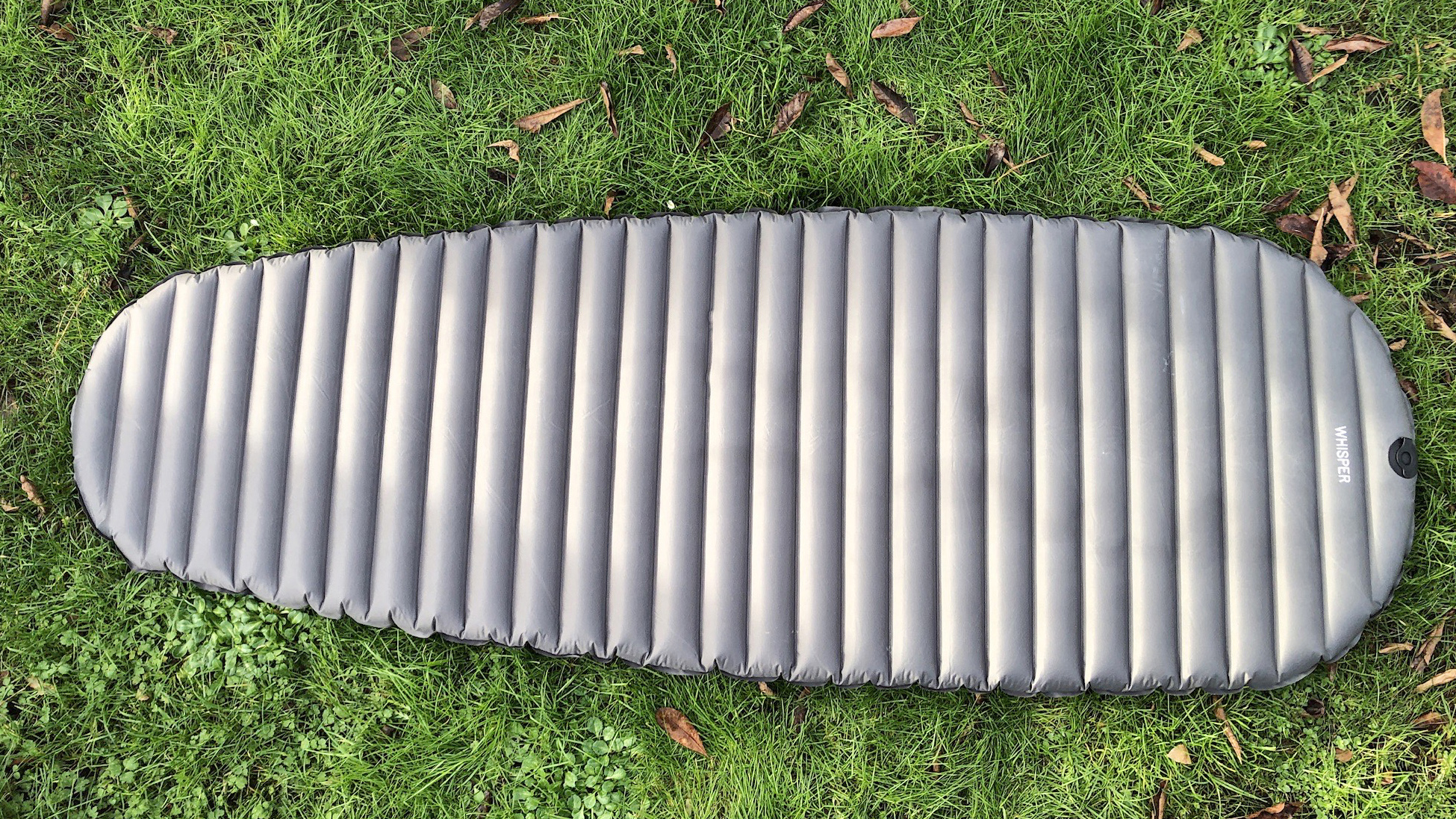
Specifications
Reasons to buy
Reasons to avoid
Insulated with Thermolite EcoMade (a polyester-based material comprised of 35% recycled content, including fibres woven from single-use plastic bottles), the R-value of this mat is 2.5, which is small for a 3-season model. On test, however, we found that it performed perfectly well even in winter, providing good thermal protection in subzero conditions. We did experience some air seepage, though. The Whisper is covered by Alpkit’s 3-year Alpine Bond, and the Peak District–based brand also operate Repair Stations where they will fix not just their own products, but also equipment made by others.
With an outer made from 100% recycled Nylon ripstop material, the Whisper is a mummy-shaped, inflatable, insulated camping mat, suitable for use across nine months of the year. Its relatively low weight and small packed proportions make it ideal for 3-season backpacking and bikepacking.
The mat is adequately wide and 7cm thick, and it boasts a baffled design, with a series of deep ridges, which are comfortable for back- and side-sleepers. Unlike lots of other insulated lightweight mats on the market, the Whisper doesn’t make any noise when you move around on it, hence the name. The mat can be inflated in the traditional way, or by using pump sack, which also doubles as a stuff sack to store the mat in.
Read our full Alpkit Whisper insulated camping mat review
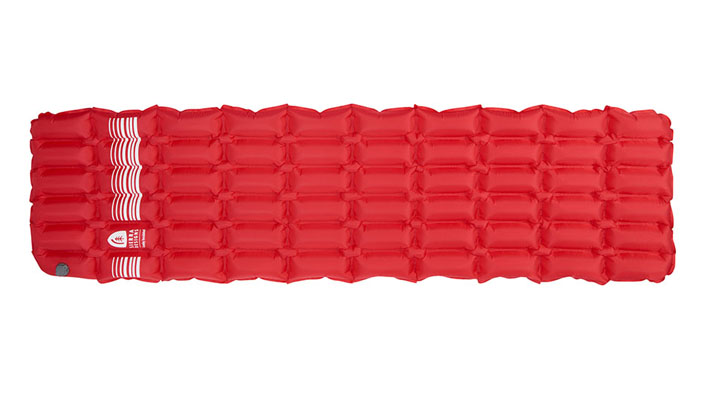
Specifications
Reasons to buy
Reasons to avoid
A relatively new sleeping pad from US brand Sierra Designs, the Granby Insulated pad is a sister mat to the company’s lightweight Shadow Mountain, with an additional layer of lightweight synthetic sheet insulation that increases the R-value to 2.1, making it suitable for a wider range of temperatures. It is still not a cold weather mat, rated for 3 seasons, but could be paired with a closed-cell foam mat like the Therm-a-Rest Z-lite SOL to create an all year sleep system. What it does bring to the table – sorry, tent – is practicality, convenience and decent levels of comfort. The mat has a great ‘burrito-style’ stuff sack that makes it really easy to pack and unpack. Inflation and deflation are also a cinch.
The design employs an unusual chambered baffle system that proved comfortable whether you sleep on your back or turn on to your side, and when fully inflated the mat is thick enough to avoid ‘bottoming out’ even at common pressure points like the hips and shoulders. We had some minor worries about the valve design – though it works well, the tight fit means it requires a fair amount of pressure to pull it open, which seems to place a lot of stress on the surrounding fabric. The valve also protrudes a little from the mat, and we found it tended to snag on our other bits of sleeping gear. Otherwise, however, the Granby is a well-made pad constructed from high-quality materials. It's pretty lightweight too, and the pack size, while not the most compact option around, is not unreasonable. The rectangular cut is also very accommodating and will appeal to campers who dislike tapered mummy-style pads.
Read our full Sierra Designs Granby Insulated sleeping pad review
Best women's sleeping pads
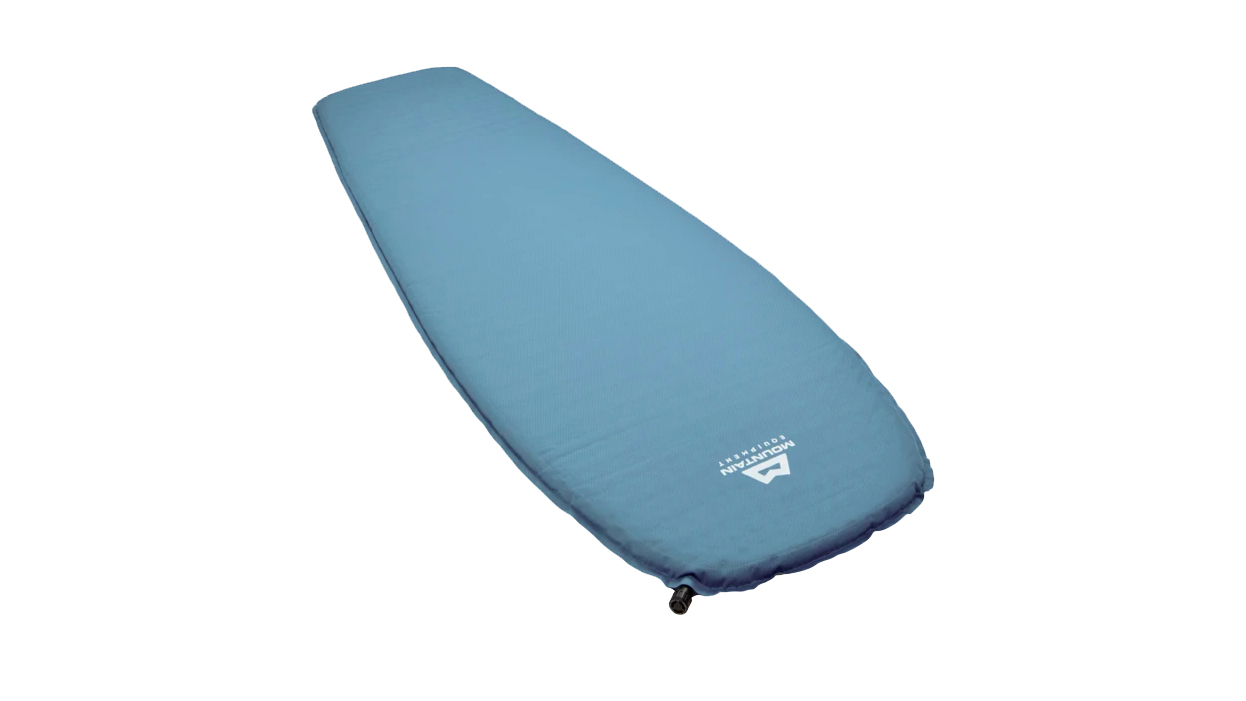
Specifications
Reasons to buy
Reasons to avoid
The female version of Mountain Equipment’s Helium is a hard-working foam mat that weighs in at a relatively svelte 670g/23.6oz – not the lightest mat we’ve tested, but is still easy enough to take away on backpacking forays or wild camping trips. The main difference between the female-specific mat and the unisex version of the Helium is the wider area around the torso (the unisex version is a plain rectangle shape), plus a shorter length and slightly lighter weight. On test, we liked the wide insulated chest area on the women’s specific mat, but the narrower bottom of the Helium may not suit those who tend to toss and turn in the night (they’ll get on better with a mat that is wider overall).
This may be a relatively thin mat, but its foam stuffing does a good job of protecting you from the ground even if you sleep on your side, and its R value of 3.6 makes the Helium work well for camping trips from spring through to fall (depending on where you are, and at what altitude – and your own personal comfort levels). The Helium is quick to inflate, and packs down small enough to be backpack-friendly for hiking trips.
Read our full Mountain Equipment Helium 3.8 Women’s Warmzone Mat review
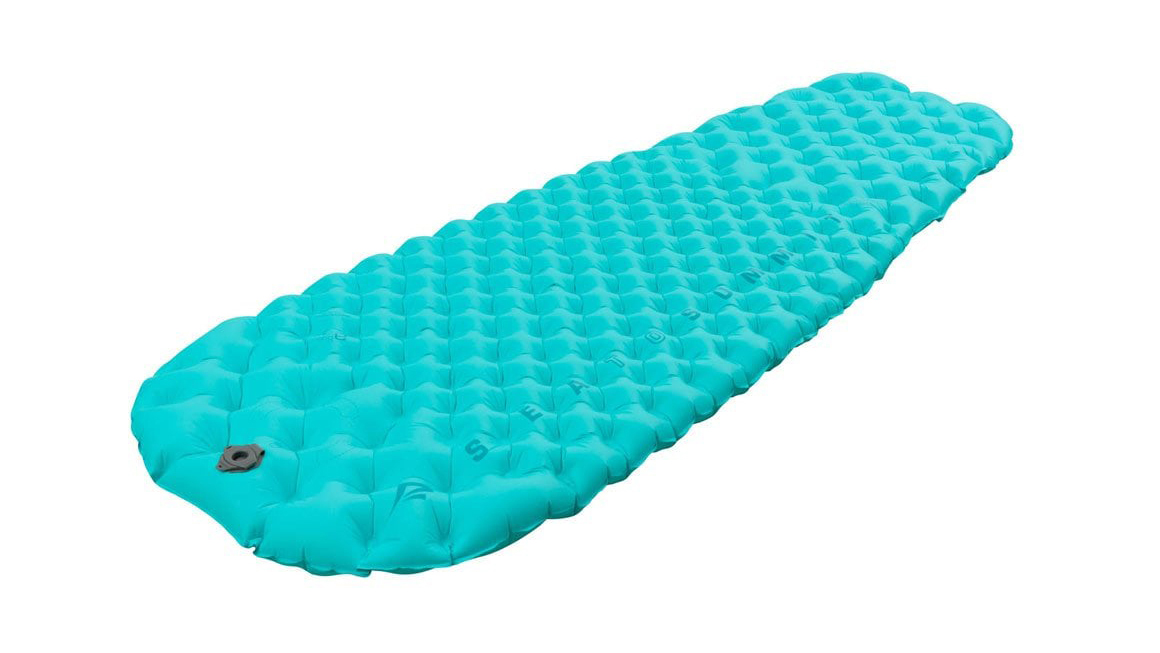
7. Sea to Summit Women’s Comfort Light
Our expert review:
Specifications
Reasons to buy
Reasons to avoid
‘Comfort Light’ is an obvious but appropriate name for Sea to Summit’s high-performance women’s specific mat – just looking at this quilted mat gives you an inkling of how comfortable it is to kip on. No less than 324 air pockets create a springy but solid surface and keep you warm and well away from cold ground.
Designed and constructed for women backpackers and outdoor adventurers, this mat is wider at the hip and narrower at the shoulder to match the female body shape and there’s a tighter pattern of air pockets around the torso to further trap in heat. This three-season mat has an R rating of 3.9 and saw us through most camping conditions besides the coldest winter camps.
If you hate losing your pillow in the night when camping, you may want to grab one of Sea to Summit’s pillows to go with the Comfort Light mat – these can be ‘locked’ in place to the top of their mats. The Comfort Light comes with a stuff sack, pump and repair kit. Packed down and weighing 555g (regular), this mat is small enough to qualify for backpacking trips, making it a nice all-rounder to take from campsite to mountainside. There is also a large version of this mat ($190/£180), which is 6ft long (183cm).
For more sleeping pads designed specifically for women, check out our guide to the best women's sleeping pads.
Best four-season sleeping pads
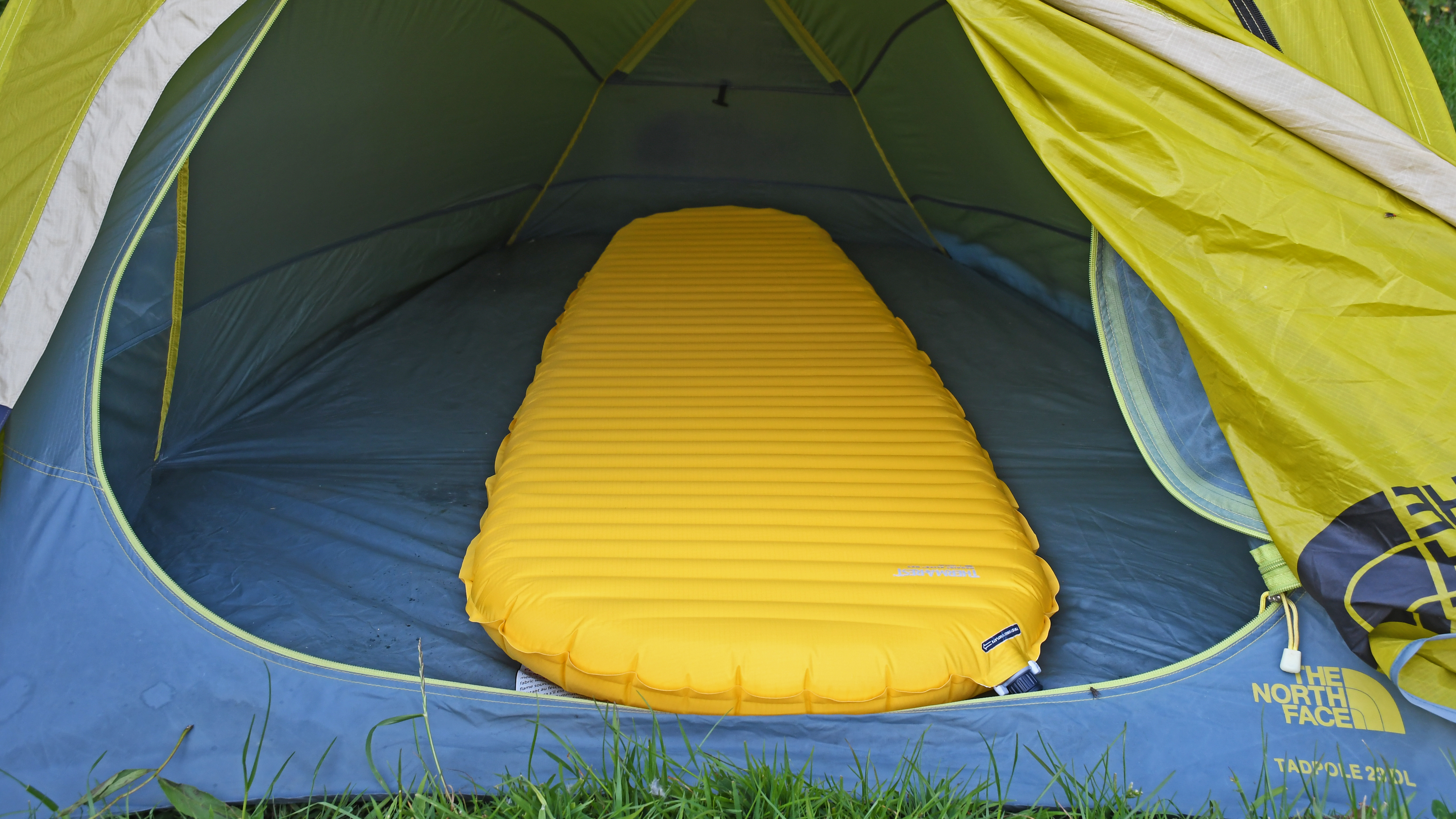
Specifications
Reasons to buy
Reasons to avoid
This newly updated version of an already excellent camping mat, designed for all-season outdoor adventurers, is now six times quieter than its predecessor. So, besides enjoying a pad that supplies luxurious comfort and great warmth for its diminutive weight, you will be able to drift off to sleep in peace, without getting disturbed by cacophonous crinkling every time you turn over.
Therm-a-Rest say they have achieved this by refining the way the mat’s ‘Triangular Core Matrix’ integrates with the warmth-radiating ‘ThermaCapture technology’ – which is just a sequence of words to most of us, but we do know – having tested this mat extensively in a range of outdoor settings and conditions, from the end of winter, right through spring and deep into summer – that this pad is indeed quiet, and comfy, and its insulating capability is excellent. Once inflated it’s a sumptuous 3in / 10cm thick and boasts an R rating of 4.5. It comes with a pump sack, carry pouch and repair kit, and once packed away is about the size of a Nalgene water bottle – a very small space-price to pay for an excellent night’s sleep.
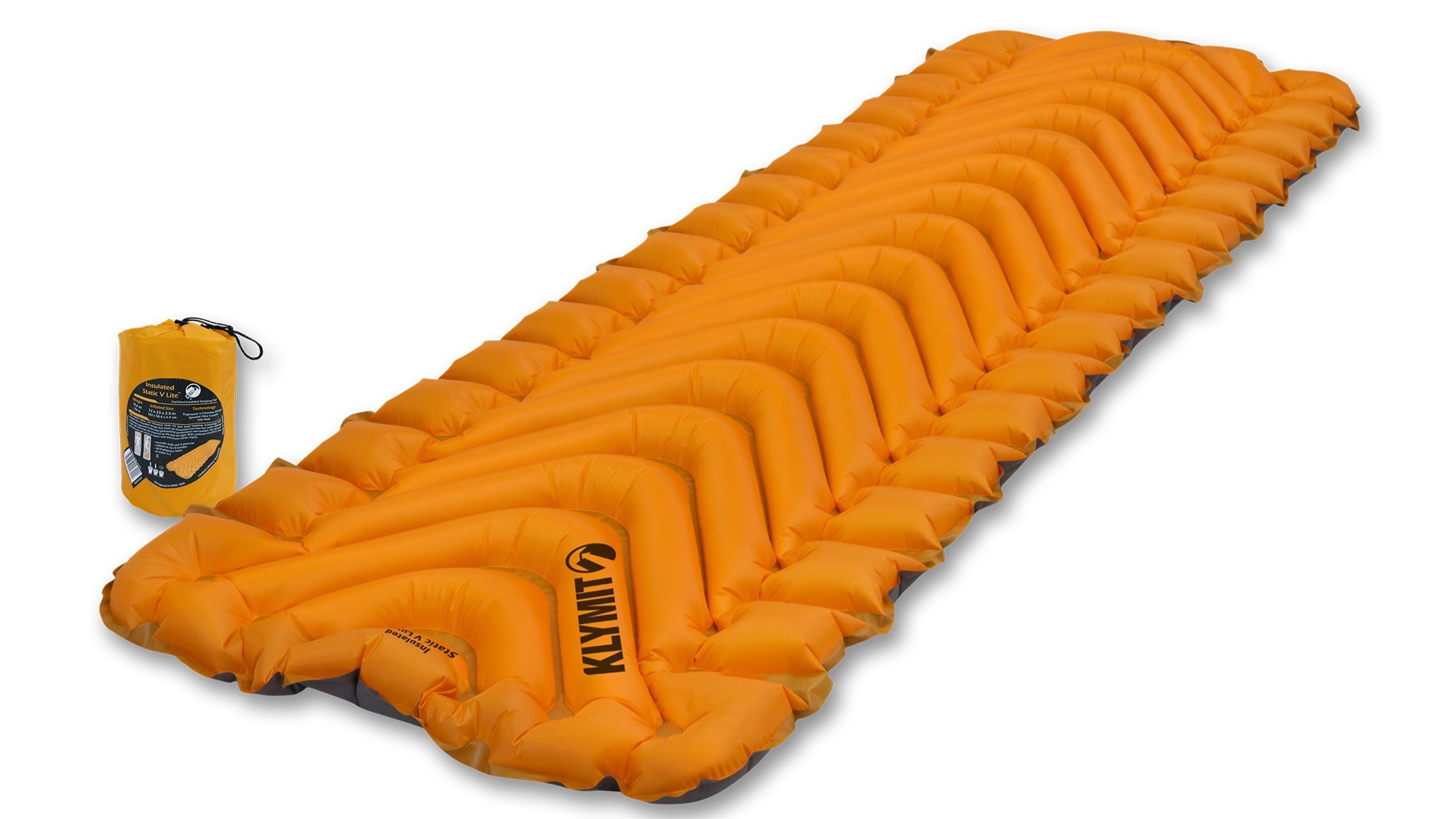
Specifications
Reasons to buy
Reasons to avoid
US outdoor brand Klymit is known for its innovative mats, and the Insulated Static V-lite is typically unusual. This mat utilizes V-shaped central baffles, while the pad has raised edges, intended to offer superior comfort and stability. On test, we found the rectangular profile accommodating and the mat has a generous inflated thickness too. Despite the slightly odd sensation compared to smoother-faced pads, which admittedly takes a little getting used to. (We slept soundly on test – the odd squeak notwithstanding.)
In addition, we were impressed by the mat’s real-world warmth, which corresponds with its R-value of 4.4. That makes it suitable for use in sub-zero conditions, so it's a real four-season pad. It’s a genuine all-season pad that is priced far more attractively than premium options from rival brands.
Read our full Klymit Insulated Static V-Light sleeping pad review
Best foam sleeping pads
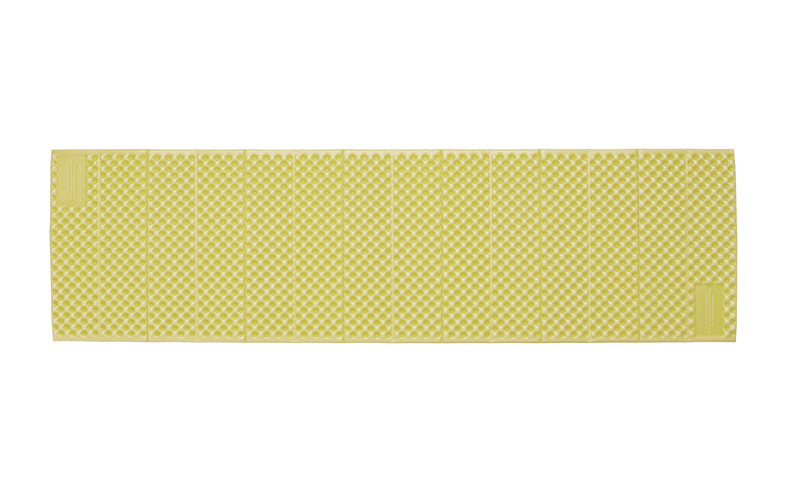
Specifications
Reasons to buy
Reasons to avoid
When it comes to tried and tested outdoor kit, few products compare to Therm-a-Rest’s renowned Z-lite mats. They’ve been used and abused all across the globe and are loved by outdoor adventurers of every ilk. That’s primarily because they’re super durable – as a closed-cell foam mat, even if they get ripped or punctured, they’ll still work. As a result, you don’t have to be so careful with campsite selection, and if your options are very limited – like a climber’s bivy, for example – it’s one of the few genuinely practical mats available, and one that’ll still prove more comfortable than lying on bare rock.
The Z Lite is therefore supremely versatile as well as being very lightweight, if slightly bulky. Of course, sleeping on 2cm of foam padding will never be as comfortable as sleeping on 8cm of lofty air. But we found that the Z-lite SOL does the best it can with what it’s got, thanks to a dual-density foam that is softer on top for extra comfort and denser on the bottom for extra durability. The design also incorporates unique dimples that are designed to trap more heat, while the SOL’s shiny ThermaCapture coating also helps to reflect body heat, which according to the brand can increase overall warmth by nearly 15%. The mat folds up concertina-style, so it can easily be strapped to the outside of a trekking pack or slotted down the side of a large rucksack. With an R-value of 2.0, it works well for two-season camps. It can also be used as a secondary layer underneath a self-inflating or air mat to boost the warmth of your sleep system.
Read our full Therm-a-Rest Z-Lite Sol sleeping pad review
Best budget sleeping pads

Specifications
Reasons to buy
Reasons to avoid
If you’re looking for a versatile self-inflating sleeping pad that’ll work for anything from car camping to moderate backpacking in all but the coldest seasons, we think the Kelty Cosmic SI is a solid choice. It’s a 2.5cm-thick mat with a foam core that takes care of most lumps and bumps, plus there's generous dimensions in terms of both length and width, as well as relaxed contouring that should accommodate even the most starfish-style sleepers.
On test, the reliable brass valve was easy to operate and didn't leak air or come unscrewed at 2am. Plus, it was quick to inflate too, requiring only a few puffs. As with most self-inflating mats, deflation is slightly more involved, but hardly an arduous task. It stows away neatly into a simple stuff sack too. The high-quality construction and materials – consisting of 20-denier ripstop nylon, promises decent durability. Admittedly, at about an inch thick, it’s not quite as plush as some air mats, and therefore better suits those who tend to sleep on their backs rather than their sides. But it has a competitive R-value, delivering plenty of warmth for three-season adventures. It’s also lightweight, and while the pack size is marginally bulkier than some, it’s still reasonably compact and will sit nicely in the bottom of a trekking pack.
Read our full Kelty Cosmic SI Mummy sleeping pad review
Beginner sleeping pads
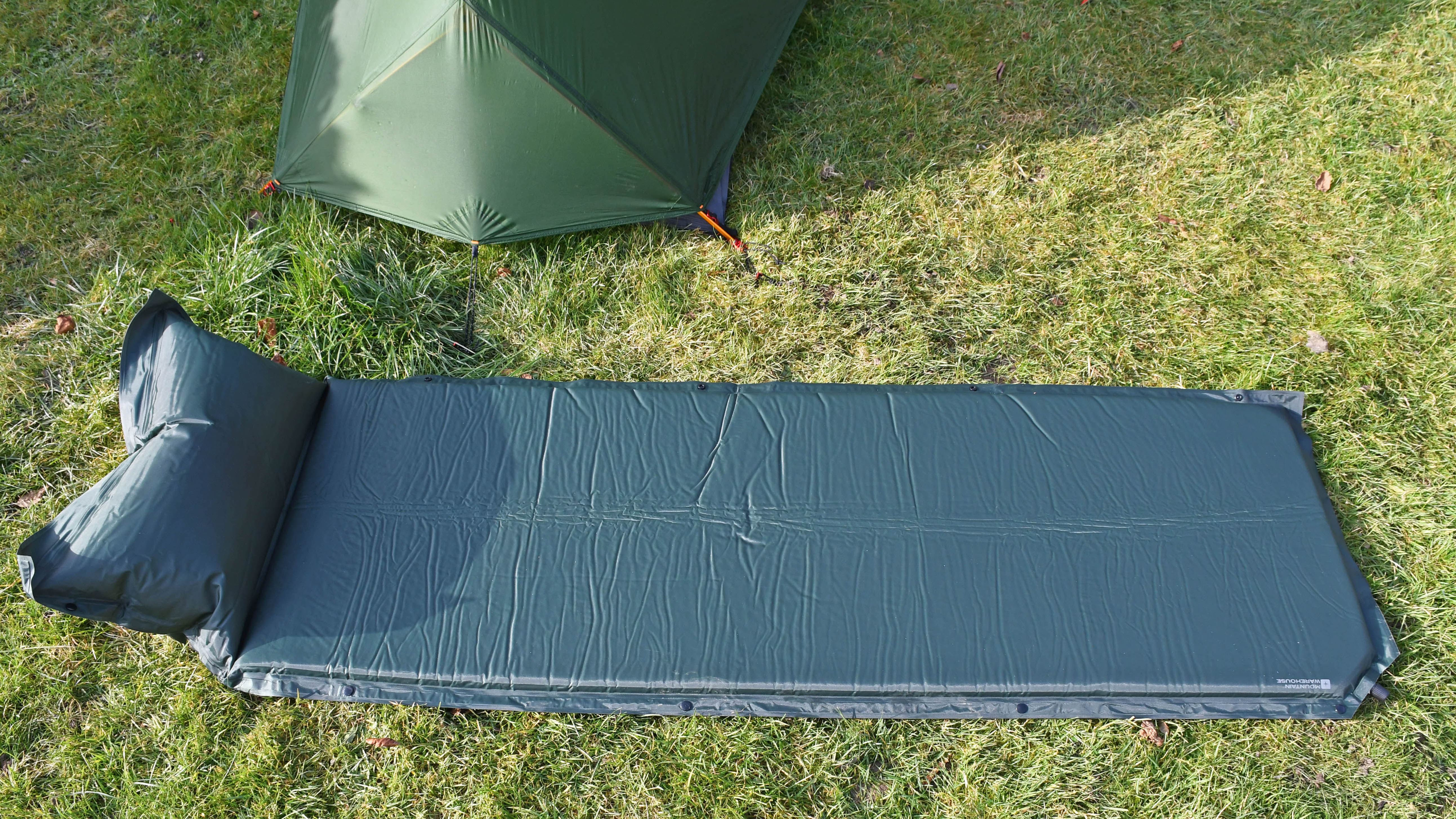
Specifications
Reasons to buy
Reasons to avoid
A basic self-inflating camping mat with an integrated pillow, this cheap and cheerful sleeping pad from Mountain Warehouse is tad too heavy and bulky to take backpacking, but we found it did its job just fine during garden sleepouts, festival forays and car camping trips when space in the vehicle is limited. The 3cm-thickness isn’t especially sumptuous, but it will protect you from the worst of the lumps and bumps beneath the groundsheet, and keep you insulated from the cold ground across three seasons. It only comes in one size, and anyone even approaching 180cm or 6ft in height will find their feet hanging over the end of the mat. The standout features are the pillow, which you blow up via a separate pinch valve, and poppers along each side (female fittings one side, male the other) that allow you to fit several of these mats together to make a double bed, or even cover the entire floor of a family tent. It comes with a stuff sack and a repair kit.
Read our full Mountain Warehouse Self-Inflating Mat With Pillow review

Specifications
Reasons to buy
Reasons to avoid
Featuring an outdoor graphic that makes it look a bit more interesting than most mats, the Dreamer 3 is an ideal starter-sleeping pad for new campers and teenagers embarking on camping an outdoor adventures, such as Duke of Edinburgh Award expeditions. It's two-season rated, so not suitable for use during the colder months.
We found it doesn’t pack down as small as many more expensive mats on the market, but it is quite narrow when rolled up, so will fit into a hiking backpack. Or, it can be strapped across the top in old-school style (just make sure you protect anything carried thus, with a waterproof cover). It features 3cm-thick insulated filling, which is reasonably protective on most softish under-tent terrain, and boasts a soft-touch durable fabric cover which is comfortable to sleep on. An easy-to-use twist valve makes inflation and pack-up pretty easy. It comes with a stuff sack and repair kit.
Read our full Vango Dreamer 3 Single sleeping pad review
The best sleeping pad comparison chart
| Sleeping pad | RRP | Weight | Style |
|---|---|---|---|
| Nemo Tensor Ultralight Sleeping Pad | $170 (US) /£170 (UK) / €170 (EU) | 540g / 1lb 3oz | Insulated air mat for 3-season use |
| EXPED Synmat UL Unisex | $170 (US) / £150 (UK) | 565g / 20oz | Insulated air mat for 3-season use |
| Therm-a-Rest NeoAir UberLite | $180 (US) / £140 (UK) | 250g / 8.8oz | Lightweight insulated air mat for 2-season use |
| Alpkit Whisper insulated camping mat | £79.99 (UK) | 820g / 29oz | Insulated air mat for 3-season use |
| Sierra Designs Granby Insulated | $100 (US) | 570g / 1lb 4oz | Insulated air mat for 3-season use |
| Mountain Equipment Helium 3.8 Warm Zone Women’s Mat | $75 (US) / £85 (UK) | 670g / 23.6oz | Women's self-inflating foam mat for 3-season use |
| Sea to Summit Women’s Comfort Light | $170 (US) / £165 (UK) | 555g / 19.5oz | Women's insulated air mat for 3-season use |
| Therm-a-Rest NeoAir XLite NXT Sleeping Mat | $277 (US) / £210 (UK) | 370g / 13 oz | Insulated air mat for 4-season backpacking and camping |
| Klymit Insulated Static V-Lite | $94.95 (US) / £89.99 (UK) | 567g /1lb 4oz | Insulated air mat for 4-season use |
| Therm-a-Rest Z-lite Sol | $45 (US) / £46 (UK) | 410g / 14.5oz | Closed-cell foam mat for 2-season use |
| Kelty Cosmic SI Mummy | $60 (US) / £55 (UK) | 560g / 1lb 3.75oz | Self-inflating mat for 3-season adventures |
| Mountain Warehouse Self Inflating Mat With Pillow | £35.99 (UK) | 1091g / 2lb 6.5oz | Self-inflating air mat with pillow |
| Vango Dreamer 3 Single | £32 (UK) | 960g / 2lb 2oz | Insulated cell-foam self-inflating air mat for 2-season use |
How we test the best sleeping pads
Our reviewers test sleeping pads overnight in a range of outdoor conditions and temperatures. Specific features (weight, comfort, warmth, size, packability) are tested against claims made by the brand, and factors such as ease of inflation/deflation, durability and value for money are also assessed. They will also carry the mat in a backpacking scenario to test its suitability for multi-day hikes.
For more details, see how Advnture tests products.
Choosing the best sleeping pad for you
Sleeping mats are available in a huge number of different shapes and sizes, and as with all categories of camping gear, different people have different needs according to where, when and how they intend using their kit.
If you’re fastpacking with your one-person tent, you will be suited to a light option that packs down small, such as the Therm-a-Rest NeoAir UberLite. Winter adventurers will need the warmest sleeping pad or mat available, though this can come at a cost. Many options, such as whether you choose a pad that inflates or a foam alternative, are down to personal preference. Our sleeping pad vs air mattress comparison explains the pros and cons of both.
Before you buy the best sleeping pad for you, consider the following points:
Quick guide
Closed-cell foam mats: very stable, easy to use, extremely durable and cheaper, but slightly bulky and not as comfortable.
Self-inflating mats (SIMs): Often featuring a foam core, these are fairly robust and offer good warmth, but they’re usually thinner than air beds.
Insulated air mats: Offering the best mix of warmth and comfort for minimal weight, the main worry is the risk of a puncture (carry a repair kit or repent during a sleepless night).
Non-insulated air mats: Extremely lightweight and very compact, good for ultralight enthusiasts, adventure racers and hardy summer campers.
Also consider the following when selecting the best sleeping mat for you:
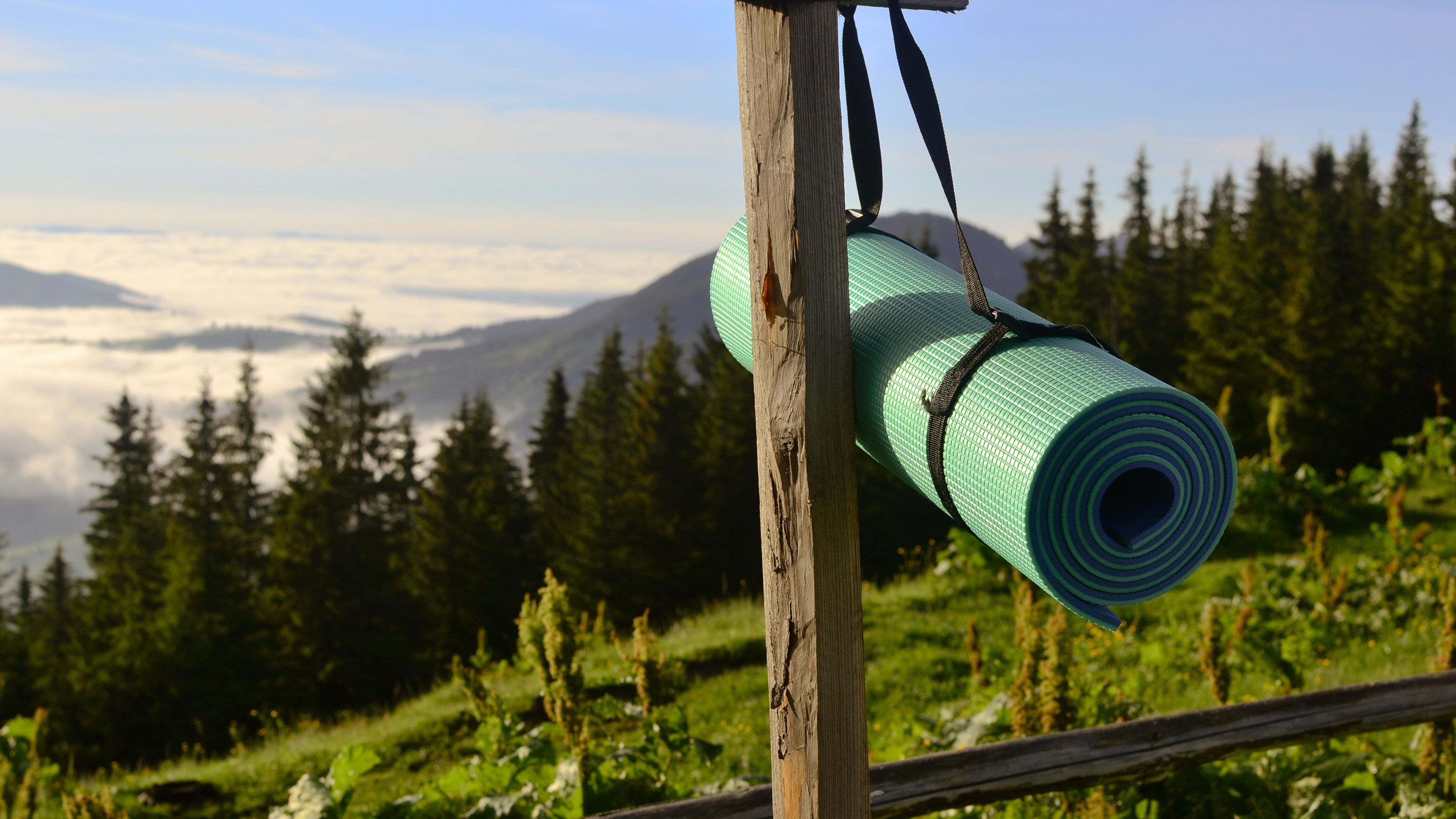
1. Shape
Though many mats utilize a basic rectangular profile, others are contoured in a mummy shape to reduce weight and pack size without unduly affecting overall sleeping comfort. Taller trekkers should consider mats that offer large and/or wide sizes. Similarly, petite users or ultralight campers can choose mats that come in a small or a three-quarter size. Some brands make specific women’s sizes that are contoured to better suit the female frame. In some cases they are also slightly warmer, with a higher R-value (as women typically sleep colder than men).
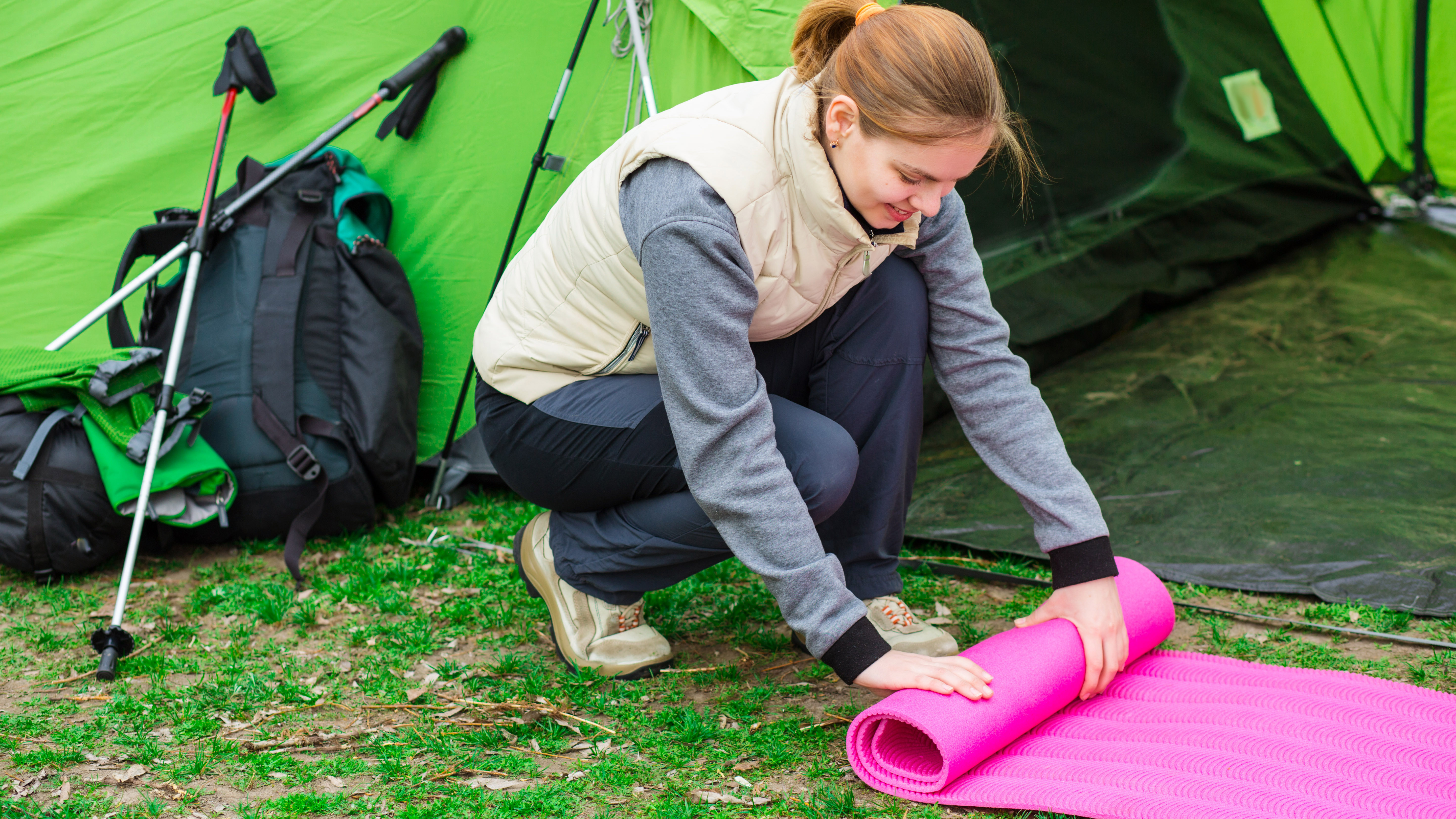
2. Design and materials
The design and construction of the mat will affect its comfort levels. A thicker mat that provides plenty of cushioning is generally more comfortable than a thinner mat, but – especially if you’re going for an air mat – make sure it isn’t so squashy that you “bottom out” and hit the floor. Thicker tubes or baffles help to prevent this, but reduce stability. Closed-cell foam mats or self-inflating mats with a foam core are usually very stable and extremely durable, but much thinner, which means compromising on comfort (especially if you’re a side sleeper) and warmth.
Self-inflating mats (SIMs) are usually equipped with a valve and foam core. Once they are unrolled and the valve has been opened, the design draws air in by itself, though they usually require a few “top-up” breaths for full inflation.
Insulated air mats require careful use, as they’re liable to puncturing – they often come with repair kits to enable quick fixes in the field.

3. Warmth
Self-inflating mats or insulated air mats are warmer than closed-cell foam mats. All sleeping mats are given an R-value, which measures an insulating material’s thermal resistance. In sleeping pad terms, it basically indicates how warm a pad is. Look for a pad with an R-value of 1.0 to 2.0 for summer use, rising to 3.0 for three-season camping and 4.0 or even 5.0+ for winter camping.
Of course, there’s much more to warmth than a sleeping pad’s R-value. Consider it as just part of a sleep system that also includes what you wear to bed – such as a down jacket in winter – your sleeping bag, tent or other shelter, the ground you’re lying on, overnight temperatures, and of course, your own physiology.

4. Ease of use
The best sleeping pads should be easy to use. With a closed-cell foam mat, you can simply unroll or unfold it and hit the hay. However, they will take up a lot of room and probably won’t fit in a standard day pack. It’s a little different with a self-inflating or air mat, however, and ease of use often depends on the valve design. Many now have a double valve that helps you to inflate them fast but also expel air quickly for rapid deflation.
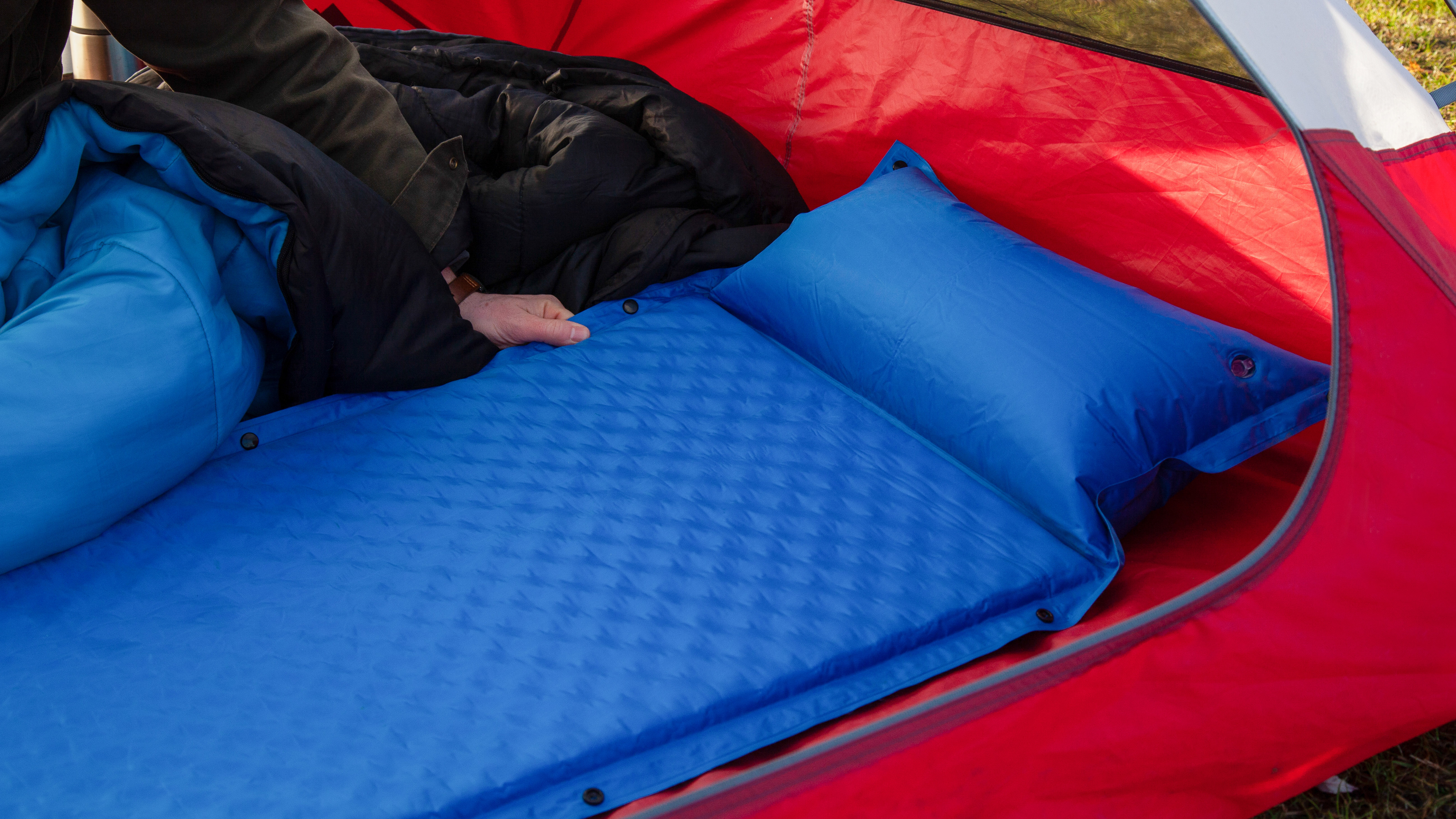
5. Weight and pack size
A good three-season sleeping mat should weigh around 600g (or around 20oz). Four-season mats with a higher R-value will typically be heavier, while ultralight mats (some of which aren’t insulated at all) can cut that figure in half.
Pack sizes and volumes also vary widely, but ideally a three-season mat should have a packed volume of no more than two liters. Closed-cell foam mats are bulkier, although given their extreme durability most backpackers carry them strapped to the outside of a pack, making their size less of an issue.

6. Value
Consider this: how much value you attribute to getting a good night’s sleep? In our experience, it’s worth spending a little more on a good quality pad as it makes a huge difference to how comfortable your camping experience is, and therefore how much you enjoy your time in the great outdoors.
If cost is a restricting factor, however, then entry-level mats can still offer good overall performance, and in some cases come with only a small increase in weight and bulk. Expect to pay more for better insulation. As always, shop around – you can almost always pick up the best sleeping pads for far less than the RRP.
All the latest inspiration, tips and guides to help you plan your next Advnture!
An outdoors writer and editor, Matt Jones has been testing kit in the field for nearly a decade. Having worked for both the Ramblers and the Scouts, he knows one or two things about walking and camping, and loves all things adventure, particularly long-distance backpacking, wild camping and climbing mountains – especially in Wales. He’s based in Snowdonia and last year thru-hiked the Cambrian Way, which runs for 298 miles from Cardiff to Conwy, with a total ascent of 73,700 feet – that’s nearly 2½ times the height of Everest. Follow Matt on Instagram and Twitter.
- Berne Broudy
- Pat KinsellaAdvnture Consulting Editor

